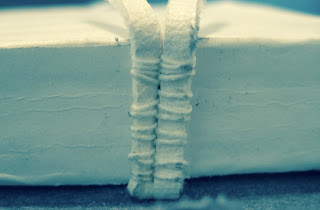I wanted to combine handmade paper with a Zig Zag book plus my carved images to make a gift for a friend going through health issues. I wrote some encouraging words alongside the printed images for her.
Supplies:
Handmade paper - 5 pieces:
1 x 7 inches, (2) 4 x 5 inches, (2) 2 1/2 x 6 inches
Arnold Grummer Mini Zig Zag Books
PVA or Mod Podge glue
Bonefolder, scissors, ruler
Carved images or rubber stamps
Arnold Grummer Mini Zig Zag Books
PVA or Mod Podge glue
Bonefolder, scissors, ruler
Carved images or rubber stamps
The Zig Zag book has 6 sides, begin by cutting slits on the 2nd and third side, then the 4th and 5th side, cut into one and 1/8th inches, leaving a half inch on the top and bottom, as pictured:
Paint the Zig Zag inside the covers and top and bottom with Tim Holtz Distress Stain: Peeled Paint. Adhere both 4 x 5 inch paper pieces to each cover.
Glue two pieces of 2 1/2 inch by 6 inches handmade paper together forming a long strip 2 1/2 by 11 1/2 inch piece. Print your rubber stamps in front of the openings, the windows. Glue 1 1/2 inches of each end inside the covers, and fold with the book.













































